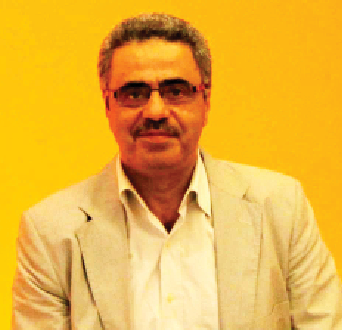Ferwati, M. S. A. Shafaghat, Ali Keyvanfar Shafaghat, A., Keyvanfar, A. Bike Lanes Toward Low-emission Street design and development: Qatar perspective. Clean Technology and Environmental Policy. www.springer.com/environment/sustainable+development/journal/10098.
Shafaghat, A. , Ali Keyvanfar, Muhd Zaimi Abd.Majid, Hasanuddin Bin Lamit, Mohd Hamdan Ahmad, Mohamed Salim Ferwati, Sib Krishna Ghoshal (2016) Methods for adaptive behaviors satisfaction assessment with energy efficient building design. Renewable & Sustainable Energy Reviews 57(2016)250–259. www.elsevier.com/locate/rser
Shafaghat, A., Keyvanfar, A., Ferwati, M. S., Bin Lamit, H., Majid, M. Z. A. (2015). Development of the Social Sustainable Urban Walkability/Assessment Framework. Journal of Local and Global Health Science.
Shafaghat, Arezou, Keyvanfar, Ali; and Ferwati, M. Salim (2015). Journal of “Local and Global Health Science”. publication in August 2015
Ferwati, M. S. and Shafaghat Arezou (2015). Pragmatic Probe: Preference and Satisfaction with Built Environment. It is Scopus index Journal. Jurnal Teknologi (Sciences & Engineering), 74(4), 125-134. https://www.google.com/webhp?sourceid=chrome-instant&ion=1&espv=2&ie=UTF-8#q=Pragmatic+Probe%3A+Preference+and+Satisfaction+with+Built+Environment
Ferwati, M. S. and Rania F. Khalil (2015). Semiotic Aspects of Museum Landscape, Contextual Integration and Symbolic Application. The International Journal of the Inclusive Museum, 8(3), 17-31. http://ijz.cgpublisher.com/product/pub.177/prod.324
Abstract: This research aims to study the development of the landscape of contemporary museums, their conceptual classification, and their contextual implementation from the mid-20th century up to the present. It will highlight cases where indoor spaces are visually expanded to outdoor spaces, where both spaces are totally separated, with landscapes that carry various functions, and with landscapes with distinctive layouts. To help develop a brief review of traditional and contemporary landscapes, the research will depend on data and literature based on the field of semiotics, driven from philosophy, phenomenology, and linguistics. The components of semiotics as defined by philosopher Charles S. Peirce’s and architect Broadbent are applied in this research. It is meant to contribute to the field of museology with a focus on museum landscape. These components are Pragmatic design, Analogic design, Canonic design, Typological designs, and Symbolic design. Different trends in museum landscape design will also be explored. Photos and tabulations will be used to illustrate and summarize the findings. This is followed by a discussion of the findings with an emphasis on the landscape’s role in enhancing the presentation of the imageability of museums and their functions. Landscapes have an indispensable role in enhancing the grandiose appearance of a contemporary museum’s imageability. Different landscape designs either convey specific coherent messages associated with museum exhibitions, or are simply meant to add a pleasing multi-function park. In either case, the overall design will be successful if it is able to cause heads to turn. The different possibilities of the landscape’s function have given extra motives for individuals and groups to stay and pass time within the vicinity.
Ferwati, M. S. (2013). Self-Cooling Wall. Online International Interdisciplinary Research Journal, 3(5), 11-23. https://www.academia.edu/7488347/Self-cooling_wall
Ferwati, M. S. (2013). The Museum of Islamic Art: Form, Perception, and Environment. The International Journal of the Inclusive Museum, 6(1), 55-71. http://ijz.cgpublisher.com/product/pub.177/prod.252
Ferwati, M. S. (2013). Spatial Behavioral Aspects of the Arab Built Environment. International Journal of Physical and Human Geography, 1(1), 1-9. http://www.eajournals.org/journals/international-journal-of-physical-and-human-geography-ijphg/vol-1-issue-1-march-2013/
Abstract: People play crucial roles in the adaptation of their environment to satisfy their needs for creative expression, security, safety, societal identity, and spatial tendency. The manifold and ever changing human needs accentuate the dynamics of spatial behaviors that alternate in respect to loss and gain of information. This article emphasizes the idea that spatial pattern is the manifestation of spatial behavior that goes through a continuous process of feedback. The process occurs when the user decides to maintain or modify the physical appearance of the surroundings and decides to create, accept, reject, or avoid any particular event. As an example of Arab cities, this article mainly examines the Damascene built environment as a reflection of users’ spatial behavior. The study associates Damascene built environment to the “Behavior as a Spatial Search” model presented by Bjorklund; including the symbolic presentations, relationship among different functional spaces, constituent architectural details, and streetscapes.
Ferwati, M. S. (2012). Beautiful Things that we Miss in Space Syntax. IISTE, Art and Design Studies, ISSN 2224-6061 (Paper) ISSN 2225-059X (Online)., Vol. 4, 1-11. file:///D:/Users/sferwati/Downloads/2663-4674-1-PB.pdf
Ferwati, M. S. (2010). Streets’ Controllability: A Comparative Study between a Traditional Arab Neighborhood and its Simplified Layout. Archnet-IJAR, International Journal of Architectural Research, 4(1), 75-84. http://archnet.org/library/documents/one-document.jsp?document_id=11067
Ferwati, M. S. (2008). Proportion and Human Scale of Damascene Courtyard Houses. 2(1), 247-263. ISSN 1994-6961
Ferwati, M. S. (2007). Head-Turning Situations: A Street Walk in the City of Old Damascus. Archnet-IJAR: International Journal of Architectural Research, 1(3), 19-39. ISSN 1994-6961
